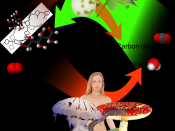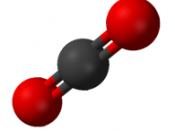Homeostasis
Homeostasis is responding to changes in the conditions of the external environment and the internal environment. Homeostasis works to maintain the organism's internal environment within tolerance limits; the range of conditions where the body's processes are able to function at a level that would allow life to continue in that organism. The respiratory, cardiovascular, and muscular systems are all controlled by homeostasis.
Changes in the activities of the cardiovascular system are often a result of changes in the activities of other systems. The heart rate, cardiac output, peripheral resistance and blood pressure respond to different degrees of bodily activity, and sometimes our level of activity is affected by environmental factors. The heart rate slows and cardiac output falls when demands on bodily systems are less are in a secure and non-threatening environment. When demands are high on bodily systems, the heart rate is high.
Breathing is essential to life: it allows oxygen to be taken in, carbon dioxide to be given off, and blood to be regulated.
Processing food within cells in order to obtain the energy needed for a wide range of cellular activities is dependent on a continuous supply of oxygen to the cells. The respiratory system takes in oxygen and excretes carbon dioxide. Homeostasis allows the respiratory system to take in oxygen in many different situations where the breathing rate is irregular or unusual.
Muscular activity requires a source of energy. When muscles are working aerobically, there are several products; heat, carbon dioxide, and water. The heat produced by active muscles helps to maintain body temperature, so muscle is contributing to heat homeostasis. However, if more heat is being produced than is needed, as for example during vigorous exercise, the excess heat has to be lost from the body to prevent a harmful rise in body...


